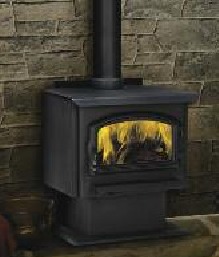
| Andreas Engel, CD | ||
|
I am a huge believer in alternate, small scale, and home-brewed alternate energy sources. We live in a time when conventional energy sources are beginning to run out and not able to
meet the demands of an already oversized population. It is up to each of us
to learn something about this and then to do something starting with conservation...
The biggest problem facing us all, more so our children, is overpopulation of the earth. This impacts us already in terms of energy, food, housing, and health costs in addition to pollution. There are too many people on earth. No matter what the global warming alarmists and others of their ilk say, this is the crux of the matter. And no one is addressing this. The exponential increase of mankind is akin to the growth of cancer in the human body and, unchecked, always leads to the death of the patient. The need for energy is, of course, increasing at the same rate. At an immediate individual level, we all require energy to cook our food and heat our homes; those are minimums without which the majority of us cannot survive a week. On a year to year basis, we require certain minimum amounts of energy to grow food that is available without interruption from harvest to harvest and we require resources to replenish local stocks of heat producing material or energy sources for heat and cooking. |
||
|
Vermont Castings 'Challenger' |
||
| All things must pass and so this year it became time to replace my trusty old Fisher airtight woodstove with something newer. After a considerable amount of time spent
looking around and researching, I decided on a woodstove which has a muddy ancestry involving no less than three different company names. The advertising
material carries the Vermont Castings name, the owners manual is headed 'Lexington Forge', and checking them out online leads to a parent holding company named Monessen Hearth Systems
Co.
I bought the pedestal base stove with stepped top, Model SSW30STAPB. Price to me was 1389.00, reduced from 1899.00; end of season sale. The stove purchase did not include the optional blower which is priced an additional whopping 300.00 dollars. I purchased a blower and automatic control switch from another make of stove for 170.00. The blower is absolutely essential to extract maximum heat and efficiency from the stove. Selling blowers as an option is a sneaky way to glean more dollars out of what is already a pricy deal... A chimney thermometer is another key 'must have' item. It should be the probe type and using it is vital to monitoring stove operation for peak efficiency and protection against creosote formation. This stove is an EPA approved high efficiency unit with 2.5 g/hour emission rating. Claimed heat output is 11k to 30.6k BTUs and combustion efficiency of 62%. It weighs 524 lbs. |
||
|
|
||
|
Installation was straightforward with the user manual giving all required clearances and chimney information. My setup consists of a six inch pipe rising at about a 30 degree
angle for a distance of two feet into a 6 to 7 inch adapter. My flue consists of a 7 inch stainless steel tube in a external masonry chimney. Very effective and
durable. The blower and separate automatic control switch were placed in similar locations as the stove they were intended for.
Operation of the stove is not so straightforward as the manual limits itself to warnings about overfiring, explanations of cresote formation, wood types & moisture content and etc. Very little information beyond lighting a fire from scratch is given. This is problematic given that the proper operation of this stove requires that one pretty well needs to forget whatever has been learned about operating older non-EPA certified stoves. And proper operation is necessary to ensure the stove functions as designed. Nothing can be found on the website about usage of these stoves and there are no contact portals or email addresses available. So forget about getting help via email from these folks. Once a fire is lit, the stove must reach operating temperature before significant heat is available. This can take three quarters of an hour, give or take. Keep a good watch on the thermometer and adjust the air feed control to maintain proper temperature in the stovepipe. A good fire which is burning cleanly will have translucent blue tinged orange flames which often dance over the wood like Northern lights. Flames at the air inlet tubes look similar to the underside of a barbecue burner in operation. Once a bed of coals is established, the fire is easy to maintain with timely additions of more wood. One thing I noticed immediately was that the fire lasts longer and although heat production is slow to start, it maintains temperature in the house far longer than the old Fisher ever did. Burn time with the oak I'm using runs about six to eight hours. Not too bad. |
||
| Pros
1. Installation instructions are clear and complete; easy to follow. Cons
Poor workmanship spoiled my complete satisfaction with what is a fairly expensive stove. In conclusion, the Challenger stove by Vermont Castings/Lexington Forge/Monessen Hearth Systems Co. is a massive, solidly built and attractive unit that is fairly easy to operate once mastered, but expensive when the annoying workmanship and design issues are considered. |
||
| check it out | ||
| My Guestbook! | ||
| Please click on the Guestbook to view. All are invited to sign... |
||
| Go to top of page | ||
| June 19, 2009 | ||
